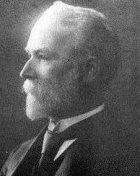E.W. Maunder (1892–1893).
 Edward Walter Maunder will always be remembered as the ‘father’ of the BAA. The story has been told in the BAA’s ‘First Fifty Years’ Memoir, and also by the writer in J. Brit. Astron. Assoc., 100 (4), 166–168 (1990). He made his reputation as a solar observer at the Royal Greenwich Observatory, for his publication of the ‘Butterfly’ diagram of sunspots and for what became known as the ‘Maunder Minimum’ in solar activity. Well before 1892, the first opposition of Mars to fall within the timeline of the early Association, Maunder had been interested in the planet. He had made observations at Greenwich Observatory for several oppositions since 1877, and he had become an early opponent of the ‘canal’ hypothesis of Percival Lowell. The 1892 opposition was not an especially favourable one for British observers: the disk diameter was large but the altitude at opposition was fairly low. Nonetheless, the Memoir produced by Maunder is an example of careful analysis. In later years, Maunder would accumulate further evidence to help demolish Lowell’s theory. Maunder’s Obituary Notice was published in J. Brit. Astron. Assoc., 38, 229–233 (1928). (Photo: BAA Presidential portrait.)
Edward Walter Maunder will always be remembered as the ‘father’ of the BAA. The story has been told in the BAA’s ‘First Fifty Years’ Memoir, and also by the writer in J. Brit. Astron. Assoc., 100 (4), 166–168 (1990). He made his reputation as a solar observer at the Royal Greenwich Observatory, for his publication of the ‘Butterfly’ diagram of sunspots and for what became known as the ‘Maunder Minimum’ in solar activity. Well before 1892, the first opposition of Mars to fall within the timeline of the early Association, Maunder had been interested in the planet. He had made observations at Greenwich Observatory for several oppositions since 1877, and he had become an early opponent of the ‘canal’ hypothesis of Percival Lowell. The 1892 opposition was not an especially favourable one for British observers: the disk diameter was large but the altitude at opposition was fairly low. Nonetheless, the Memoir produced by Maunder is an example of careful analysis. In later years, Maunder would accumulate further evidence to help demolish Lowell’s theory. Maunder’s Obituary Notice was published in J. Brit. Astron. Assoc., 38, 229–233 (1928). (Photo: BAA Presidential portrait.)
| The British Astronomical Association supports amateur astronomers around the UK and the rest of the world. Find out more about the BAA or join us. |
